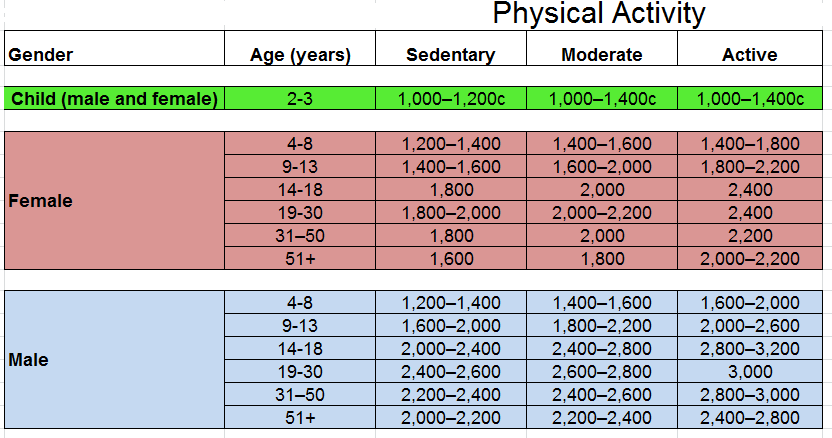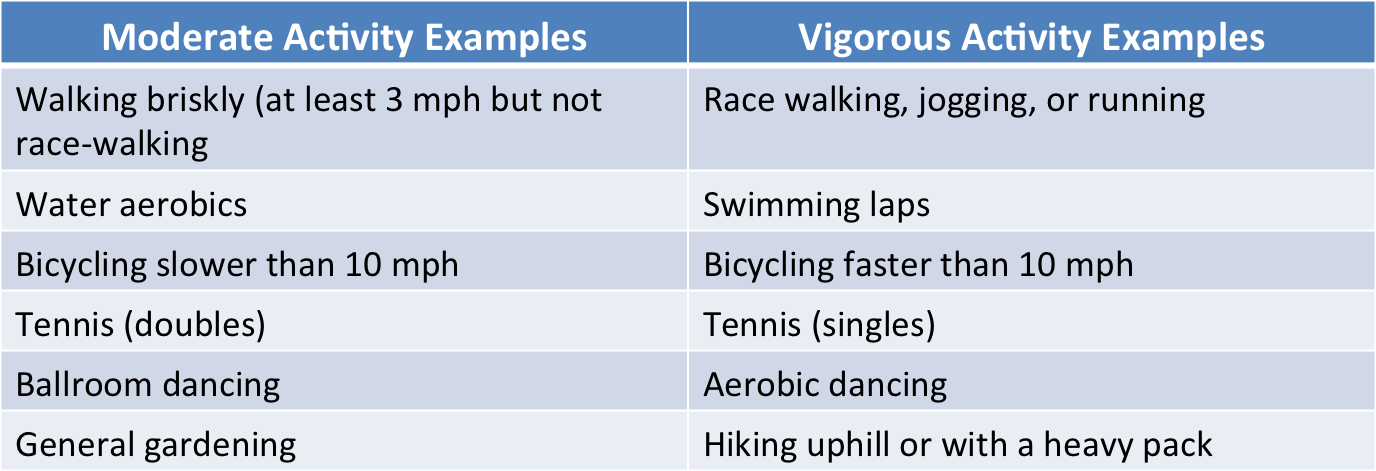Basic Concepts
The fundamental goal, of course, is to promote health through a balanced, nutritious diet that balances calorie intake and calorie expenditure. A few basic definitions and reference points are important.
Nutrient-dense vs. Energy-dense Food
|
Nutrient-dense foods are characterized by a high amount of nutrients such as vitamins, calcium, fiber (e.g. mg/g, g/L):
Foods with added sugar or fat are usually not nutrient-dense. |
Energy-dense food items are characterized by a high amount of calories (e.g. kcal/g, kcal/L):
Most nutrient-dense foods are not energy-dense, but nuts are an exception. |
Calorie Needs of Adults
The calorie needs or energy requirements for adults vary with age, gender, height, weight, level of physical activity, and medical/surgical conditions. Generally, the calorie requirements are higher in adults who are males, younger, and athletes.
The table below provides some general guidelines.

CDC Recommendations for Physical Activity
To improve overall health, maintain weight and reduce the risk for chronic disease, most American adults (ages 18-64) should get:
- 150 minutes of moderate activity per week (30 minutes 5 days per week) OR
- 75 minutes of vigorous activity per week (15 minutes 5 days per week) AND
- Engage in muscle strengthening activity 2-3 days per week
Recommendations vary for other populations including children, older adults, and pregnant women, and there are also separate recommendations for those looking to lose weight.
CDC Physical Activity Guidelines

When discussing activity level with patients, it is useful to educate them about:
- Target Heart Rate
- Rating of Perceived Exertion Scale
These and other useful techniques can be found at: Measuring Physical Activity Intensity